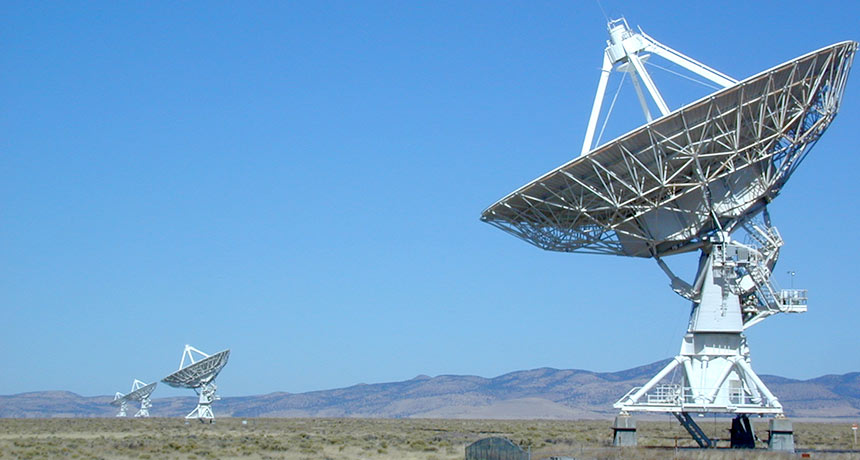
MIXED SIGNALS Radio telescopes at the Very Large Array (shown) picked up more emissions from the alleged host galaxy of a cosmic radio burst, calling into question claims of the signal’s origin.
Daniel Wabyick (CC BY 2.0)

MIXED SIGNALS Radio telescopes at the Very Large Array (shown) picked up more emissions from the alleged host galaxy of a cosmic radio burst, calling into question claims of the signal’s origin.
Daniel Wabyick (CC BY 2.0)